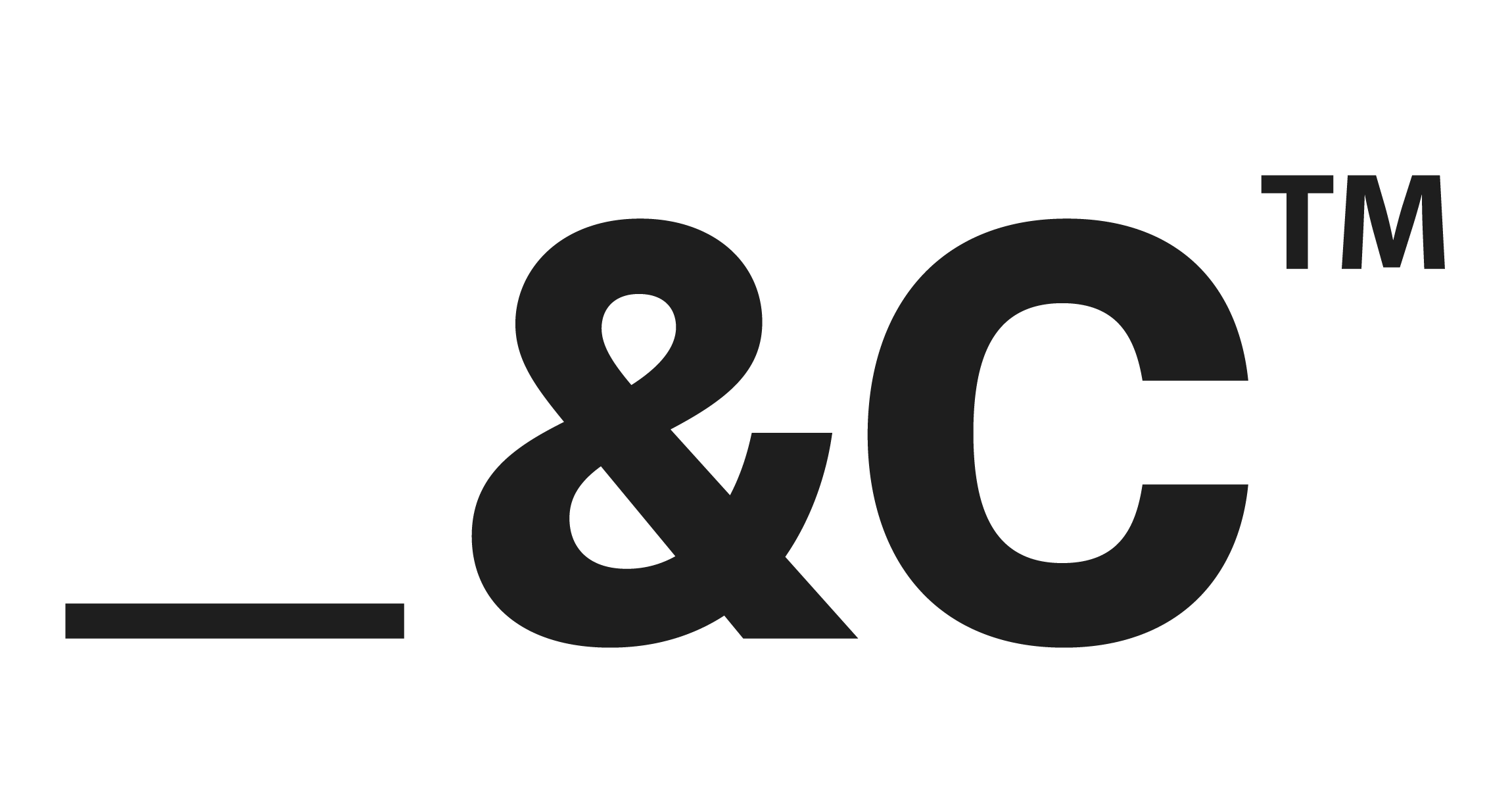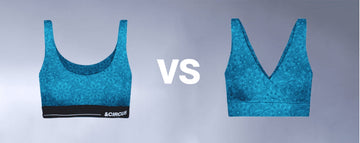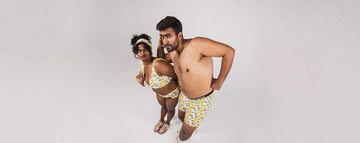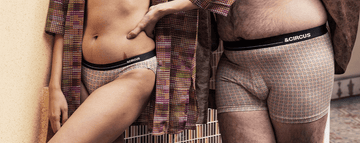Quick Listen:
Step into a lingerie boutique today, and you'll notice a revolution. Gone are the days of uniform models and one-size-fits-most designs dominating the racks. Instead, you'll find displays celebrating every body type curvy, petite, postpartum, non-binary draped in soft, sustainable fabrics like micromodal. This shift isn't just about aesthetics; it's a cultural reckoning. Driven by the body-positive movement and amplified by social media, the lingerie industry is redefining itself to prioritize inclusivity, comfort, and self-expression over outdated ideals of perfection.
The global lingerie market, valued at $93.4 billion in 2024, is on track to reach $182.4 billion by 2035, growing at a steady 6.3% annual rate, according to Vantage Market Research. This growth reflects more than just sales it signals a transformation in how lingerie is designed and perceived. No longer just functional undergarments, bras, panties, shapewear, and camisoles have become tools for empowerment and style. The rise of body positivity has spurred demand for diverse sizing and inclusive designs, while e-commerce platforms make personalized shopping accessible globally. Social media trends, celebrity endorsements, and a growing female workforce further fuel the appetite for premium, eco-friendly materials.
Uncomfortable underwear shouldn't steal your confidence. At Andcircus, we craft ultra-soft, sustainable Lenzing Modal Micro® innerwear for every body, XS to 5XL. From briefs to bras, our custom packs fit you perfectly. Shop risk-free with our 100% satisfaction guarantee and embrace comfort that includes everyone. #LoveEveryBody. Shop Now!
Redefining Fit for Every Body
Lingerie design has pivoted from rigid sizing charts to flexible, adaptive fits that embrace real bodies. Seamless construction and buttery-soft micromodal a sustainable fabric made from beechwood offer comfort for sensory-sensitive wearers. Tag-free labels and stretchy, high-waisted options cater to diverse needs, from postpartum recovery to non-gendered preferences. This evolution prioritizes function without sacrificing style, ensuring that lingerie feels as good as it looks.
Marketing has caught up, too. Brands now showcase models of all shapes, sizes, and identities, moving beyond tokenism to make inclusivity a core value. Smaller brands are carving out niches with eco-friendly micromodal lines, emphasizing ethical production and extended sizing. These efforts reflect a broader cultural shift toward celebrating individuality over conformity.
Brands Setting the Standard
Consumer feedback shapes product lines through social media platforms like X, where a single post praising inclusive maternity briefs can spark a viral design trend, proving the power of user-generated content.
E-commerce has been a game-changer, driving the lingerie market's growth by offering tailored shopping experiences. Vantage Market Research highlights that body positivity awareness and online accessibility are key growth drivers. Social media platforms amplify this, with influencers and celebrities turning lingerie into a celebration of self-love. The result is a market that listens to its customers, iterating designs based on real-world needs.
The Hurdles of Inclusive Design
Designing for all bodies is no small feat. Offering sizes from XS to 5X increases production costs, from sourcing more fabric to testing diverse fits. Micromodal, while luxurious and eco-friendly, is pricier than cotton or polyester, challenging brands to balance sustainability with affordability. Standardizing fit across varied body types is another hurdle what flatters one frame might not work for another. Then there's the cultural challenge: convincing consumers to value comfort over the fantasy-driven aesthetics of yesteryear, like the iconic 1994 Wonderbra campaign that redefined lingerie advertising.
Shifting mindsets takes effort. For decades, lingerie was marketed as a tool for external validation, not personal comfort. Rewiring that narrative requires education and authenticity, as brands work to align their offerings with evolving consumer values.
Seizing Opportunities in a Growing Market
The payoff for inclusive design is substantial. Brands that prioritize inclusivity foster loyalty by resonating with consumer's values. By targeting underserved groups like postpartum women or non-binary individuals brands tap into new revenue streams. Direct-to-consumer models, bolstered by e-commerce, allow for transparent sizing guides and customer reviews, building trust in a competitive market.
The influence of athleisure trends is undeniable. Characterized as fashionable, dressed-up athletic wear, athleisure has bled into lingerie, with micromodal bralettes and leggings doubling as everyday essentials. This versatility appeals to North American women seeking stylish, functional pieces, regardless of whether they're hitting the gym or the office. Social media keeps brands nimble, with TikTok hauls and Instagram try-ons driving real-time design tweaks.
A Future Built on Inclusivity
The lingerie industry is poised for a tech-driven leap. AI-powered sizing tools, adopted by some e-commerce platforms, analyze body scans for custom fits. Textile engineers are developing biodegradable micromodal blends that decompose faster while maintaining softness. As body positivity becomes mainstream, brands will double down on ethical branding, with transparent sourcing and labor practices becoming table stakes.
With the market projected to hit $182.4 billion by 2035, brands that ignore inclusivity risk obsolescence. Strategic investments in AI-driven design, diverse influencer partnerships, and sustainable materials will set leaders apart. The message is clear: designing for every body isn't just a trend it's a necessity for staying relevant.
A Revolution in Every Seam
Lingerie has evolved far beyond the provocative campaigns of the 1990s, like the Wonderbra's “Hello, boys” ad that once dominated headlines. As The Guardian noted in 2018, an “underwear revolution” was underway, and it's only gained momentum. Today's lingerie doesn't mold bodies to fit ideals it molds designs to fit bodies. As consumers demand authenticity, sustainability, and comfort, brands are weaving inclusivity into every thread.
Uncomfortable underwear shouldn't steal your confidence. At Andcircus, we craft ultra-soft, sustainable Lenzing Modal Micro® innerwear for every body, XS to 5XL. From briefs to bras, our custom packs fit you perfectly. Shop risk-free with our 100% satisfaction guarantee and embrace comfort that includes everyone. #LoveEveryBody. Shop Now!
Frequently Asked Questions
How has the body-positive movement changed lingerie design and sizing?
The body-positive movement has revolutionized lingerie design by shifting focus from rigid sizing charts to flexible, adaptive fits that embrace real bodies. Brands now offer extended sizing from XS to 5XL, use seamless construction with sustainable materials like micromodal, and feature diverse models in their marketing campaigns. This evolution prioritizes comfort and inclusivity over outdated ideals of perfection, making lingerie accessible to all body types including postpartum women and non-binary individuals.
What are the main challenges brands face when designing inclusive lingerie?
Designing inclusive lingerie presents several key challenges including increased production costs from sourcing more fabric and testing diverse fits across extended size ranges. Premium sustainable materials like micromodal are more expensive than traditional cotton or polyester, making it difficult to balance sustainability with affordability. Additionally, brands must overcome the cultural challenge of convincing consumers to value comfort over the fantasy-driven aesthetics that dominated lingerie marketing for decades.
How is technology and e-commerce driving growth in the inclusive lingerie market?
Technology and e-commerce are major growth drivers in the $93.4 billion lingerie market, with AI-powered sizing tools analyzing body scans for custom fits and social media platforms enabling real-time design feedback from consumers. E-commerce platforms offer tailored shopping experiences with transparent sizing guides and customer reviews, while direct-to-consumer models allow brands to build trust and reach underserved markets. The market is projected to reach $182.4 billion by 2035, driven by this digital transformation and growing demand for personalized, inclusive designs.
Disclaimer: The above helpful resources content contains personal opinions and experiences. The information provided is for general knowledge and does not constitute professional advice.
You may also be interested in: How Body-Positive Innerwear Campaigns Resonate With Gen Z
Uncomfortable underwear shouldn't steal your confidence. At Andcircus, we craft ultra-soft, sustainable Lenzing Micro Modal innerwear for every body, XS to 5XL. From briefs to bras, our custom packs fit you perfectly. Shop risk-free with our 100% satisfaction guarantee and embrace comfort that includes everyone. #LoveEveryBody. Shop Now!







































